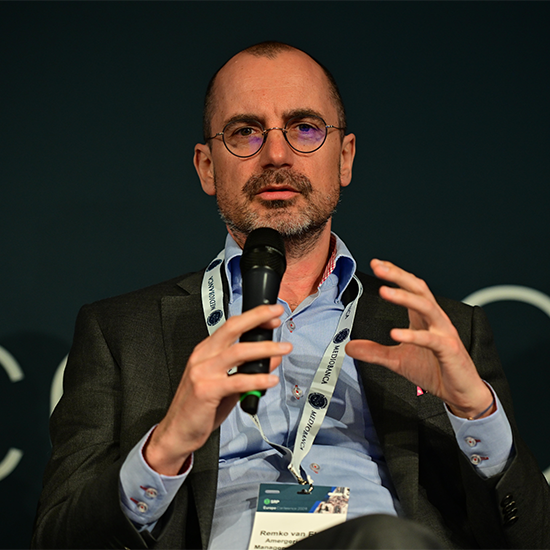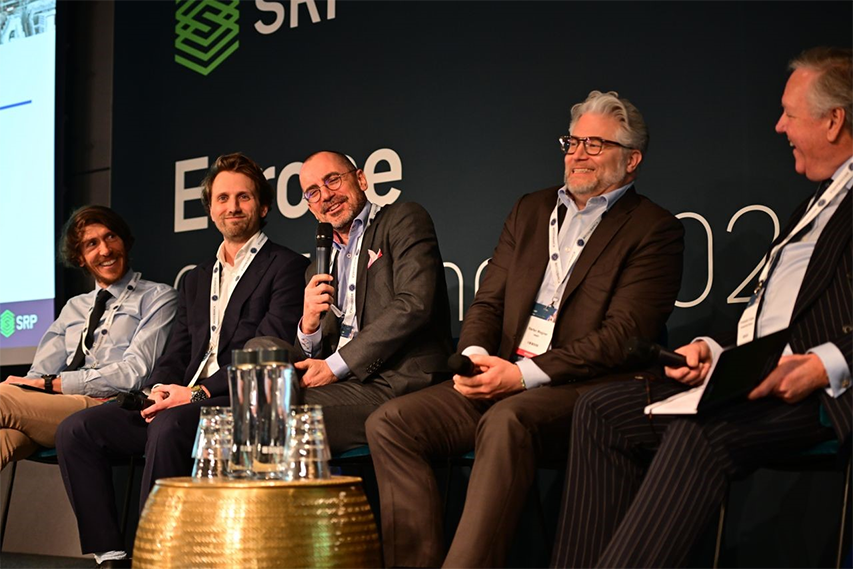Panelists discuss the opportunities and challenges around actively managed certificates (AMC) at the SRP Europe Conference 2024 in London on 19 March.
Actively managed certificates (AMC) are fast gaining the market’s attention, particularly in Europe, as the products fill in the gaps that conventional products may not have.
[AMCs] are in the middle – you have the flexibility of the structured product but also the potential dynamic capacity of the fund - Jean-Pierre Ané, Kepler Cheuvreux
That’s according to Jean-Pierre Ané, deputy group general manager and head of business development at French financial service firm Kepler Cheuvreux, also one of the panellists who spoke on stage during the SRP Europe Conference 2024 in London.
“[AMCs] are in the middle – you have the flexibility of the structured product but also the potential dynamic capacity of the fund,” Ané said.
Ané noted that AMCs are a “simpler version” of the fund which can be seen as a securitisation vehicle “that can be on or off the balance sheet, where one can put in different types of assets”.
Stefan Wagner, head of business development at vestr, the Zug-based business-to-business technology provider focusing on actively managed investment products, noted that the major difference between those that are actively managed and passively managed has increasingly become fluid.
According to Wagner, passive strategies that historically were linked to indices have given way to new strategies linked to more dynamic underlyings.
The dynamics between the two types of investment vehicles also raised questions in the industry about how to define proper regulation.
If you’re [passively] managing, you will allocate the strategy to one asset, so you don't need to be regulated - Hadrien Schmidt, AIS Financial Group
“If it’s [actively managed], you need to be regulated because you're making decisions about the asset,” said Hadrien Schmidt, head of structuring and private markets at AIS Financial Group, the Geneva-based structured products independent investment boutique.
“If you’re [passively] managing, you will allocate the strategy to one asset, so you don't need to be regulated,” he continued.
But as AMC combines features of structured products and actively managed funds, “should it be the regulation from the structural product side, which is the current regulation? Or do you have something more oriented on the asset management side?,” Kepler Cheuvreux’s Ané said.
“I think it's very important that when you issue as an AMC issuer, you have a regulated asset manager that does these things,” said Remko van Ekelen (pictured), board member and CEO at Zug-based Amergeris Wealth Management. He sees that there’s a lot of demand for AMC in Europe, the Middle East, and Singapore.
“Private banks are leading the investments into these things [AMC],” Van Ekelen said. “It gets difficult when you deal with a local retail bank.”
Meanwhile, large banks are also offering AMCs via special purpose vehicles (SPV).
Wagner said that on the SPV side, asset managers can put in non-bankable assets that are usually not easily traded in the market.
Schmidt, who previously worked on the securitisation team at BNP Paribas, noted that while bankable assets tend to be cheap and easily accessible, non-bankable assets in the SPV still tend to become capital consumption for banks.
The challenge of starting a scalable AMC comes from the infrastructure, Wagner noted.
“Unlike traditional structured products where nine percent of the work usually goes into initial pricing in the documentation, those work in the AMC usually after shipping a product, such as rebalancing the fee calculations, inflow and outflows, new deployment, new assets class,” he said.
“[There’s] just thousands of data points over the life of an AMC that you need to monitor,” he concluded.
Do you have a confidential story, tip or comment you’d like to share? Write to info@derivia.com


